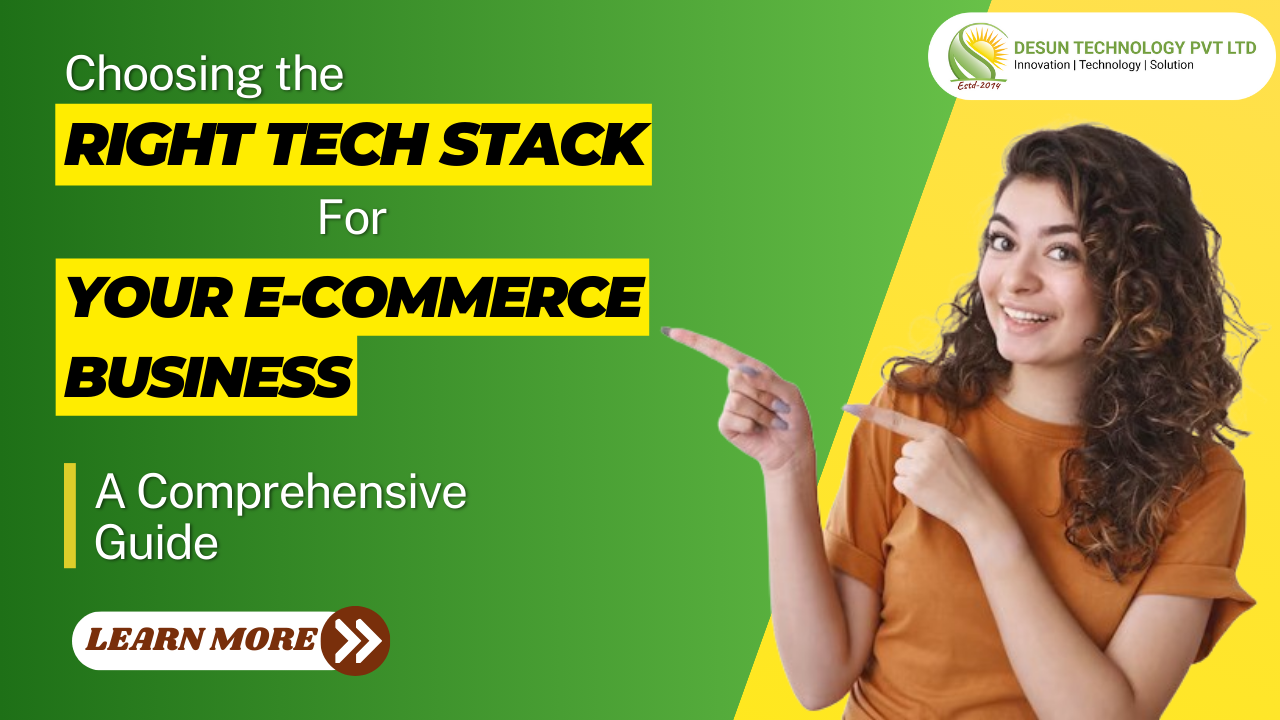
A Comprehensive Guide to Choosing the Right Tech Stack for Your E-Commerce Business
In the dynamic landscape of e-commerce, selecting the right technology stack is crucial for the success and scalability of your online business. From ensuring a seamless user experience to managing inventory and processing transactions securely, your tech stack plays a pivotal role. In this comprehensive guide, we’ll walk you through the key considerations and steps to help you make informed decisions when choosing the technology stack for your e-commerce venture.
Are you ready to elevate your e-commerce business to new heights? no further than Desun Technology.
A well-chosen tech stack not only enhances the overall performance of your platform but also contributes to a seamless user experience. In this article, we will delve into the key considerations and essential components that make up an effective e-commerce tech stack.
Understanding Your Business Requirements:
-
Defining your business goals and objectives.
-
Identifying target audience and market niche.
-
Outlining specific features and functionalities required.
Scalability and Flexibility:
-
Assessing the scalability of your chosen stack.
-
Ensuring flexibility to adapt to future growth and technological advancements.
-
Evaluating the ease of integrating new features and modules.
Frontend Technologies:
-
Exploring modern frontend frameworks (React, Angular, Vue.js).
-
Mobile responsiveness and cross-browser compatibility.
-
User interface and experience considerations.
Backend Technologies:
-
Choosing a backend language (Node.js, Python, Ruby).
-
Selecting a backend framework (Express, Django, Ruby on Rails).
-
Database management (SQL vs NoSQL databases).
Server and Hosting:
-
Evaluating hosting options (cloud-based, dedicated servers).
-
Considering server maintenance and security.
-
Ensuring reliable and scalable server architecture.
Security Measures:
-
Implementing SSL/TLS for secure data transmission.
-
Securing payment gateways and sensitive customer information.
-
Regular security audits and updates.
Payment Gateway Integration:
-
Assessing compatibility with popular payment gateways.
-
Ensuring seamless and secure payment processing.
-
Support for multiple currencies and payment methods.
Inventory Management:
-
Selecting inventory management systems or platforms.
-
Integrating with the chosen e-commerce platform.
-
Real-time tracking and updates.
Third-party Integrations:
-
Identifying necessary third-party integrations (CRM, analytics, marketing tools).
-
Ensuring smooth integration with existing systems.
-
API availability and documentation.
Mobile App Considerations:
-
Deciding on native vs. cross-platform mobile app development.
-
Ensuring synchronization with the web platform.
-
Mobile-specific features and optimizations.
Analytics and Reporting:
-
Implementing analytics tools for tracking user behavior.
-
Generating reports for sales, customer engagement, and website performance.
-
Continuous monitoring and analysis for improvements.
Compliance and Regulations:
-
Adhering to legal requirements for e-commerce.
-
Compliance with data protection regulations.
-
Staying informed about industry-specific regulations.
Conclusion:
Selecting the right IT stack for your e-commerce business is a calculated move that impacts the efficiency, user experience, and general prosperity of your website. By thorough analysis of the elements outlined in this comprehensive guide, you can ensure your online business succeeds in the cutthroat digital economy by providing a solid and scalable infrastructure.
After reading this blog, if something piques your interest, please share it with others, or else please feel free to leave a comment with your thoughts.




